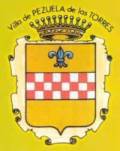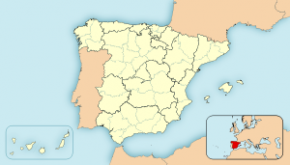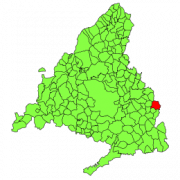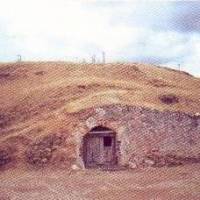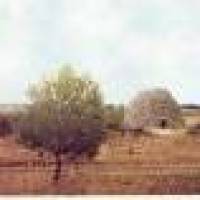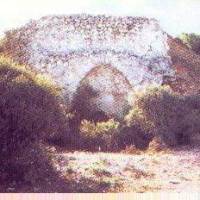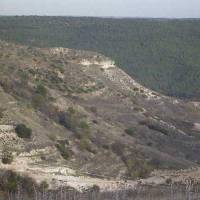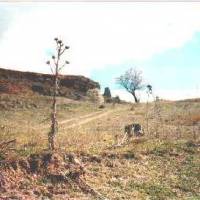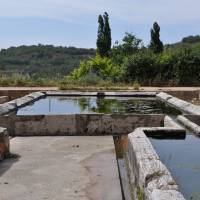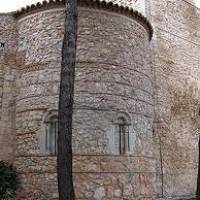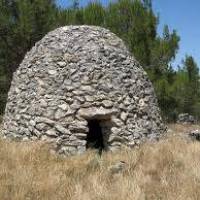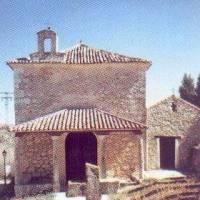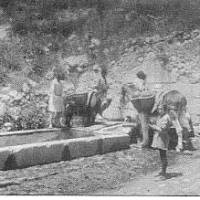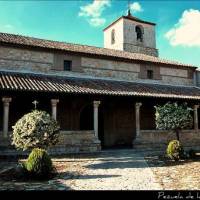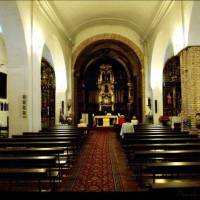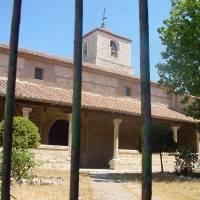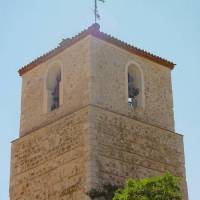This is an old revision of the document!
PEZUELA DE LAS TORRES
The town of Pezuela of Forres is located east of the Community of Madrid in an extensive wilderness of 900 m. altitude, as part of the Alcarria, 20 km from Alcalá 30, Madrid, Guadalajara and 50.
Location of the municipality
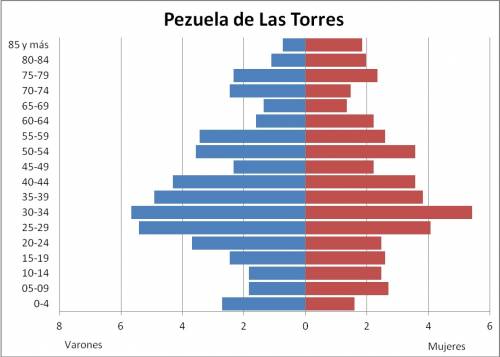 Located in an area of Campinas east of the Community of Madrid, known as the Alcarria of Madrid. The town is located on a large moor, at the foot of a valley town that is born will reach the river below Tajuña 2 km (approximately).
Located in an area of Campinas east of the Community of Madrid, known as the Alcarria of Madrid. The town is located on a large moor, at the foot of a valley town that is born will reach the river below Tajuña 2 km (approximately).
It belongs to the judicial Alcalá de Henares, the countryside of County Henares, Madrid province.
Neighboring Municipalities
North: Santorcaz and Pioz.
South: Olmeda de Las Fuentes and Ambite.
West: Nuevo Baztán and Corpa.
East: Loranca de Tajuña and Fuentenovilla.
Geographic Data
Area: 41,44 Km²
Altitude: 860 m
Latitude: 40°25 10’ ’’N
Longitude: 3°10’43’’ O
History
It is unknown exactly when the town was founded, it is known that the Tajuña Vega must have been inhabited before Roman times. While true, is credited with founding Pezuela the current population of the Arabs, who moved to fortify the slope in the wilderness, calling Pizol, Pesola, Peçuela, Pezuela Pozuelo and the number of wells needed to make to stock of water. The name “of the Towers” added the Count of Pezuela mid-seventeenth century.
After the reconquest of the region, Pezuela was under the jurisdiction of Guadalajara, and years later became the town of Alcala de Henares. In 1554 the Council of 180 residents, gathered 1,500,000 maravedis, with whom King Charles I paid their jurisdiction, thus the title of Villa Pezuela. In the year 1642 was awarded the title of first Earl of Don Bartholomew Spinola Pezuela.
Patrimony
Main architectural element, found in the Torres Pezuela the Parish Church of the Assumption of Our Lady presents outwardly a typical Spanish architecture of the sixteenth and eighteenth centuries, enriched in its header with a semicircular apse Romanesque perfectly restored, is one of the very few vestiges of Romanesque art in the Community of Madrid. Stresses the Bell Tower consists of two bodies and the arcaded gallery, known as “The Portalillo” built in 1536 by master masons and Hernando Alonso de la Sierra. Inside awaits a wide variety of high quality altarpieces, all baroque style with elements of rococo.
Special mention “The Pillory” Pezuela de las Torres. Restored by the City and the Community of Madrid in 2002, his tuis of 7 m. commemorated high, and warned the traveler, the power of justice and the condition of Villa, the neighbors bought the King Charles I in 1554.
Festivities and Traditions
Festivities of la Cruz de Mayo (Secondary) : is celebrated on May 3. Placement takes place in May, the rounds of the Virgin and the girls, religious ceremonies and dances.
Festivities of Santísimo Cristo del Socorro (Principal): held on September 14. Religious ceremonies are performed, dances, activities and games, various sports tournaments, activities bullfighting, fireworks, etc.
Living Nativity: recently implemented, include the representation of a Living Nativity that is developed by the town's streets and low performance of the neighbors on December 25 or Sunday close.
Pilgrimage of San Benito:
At dawn on July 11 takes place pilgrimage to the Ermita de San Benito. Procession is carried out with the image of the Holy Christ this chapel Relief located 5 km from the village, next to the River Tajuña and former wilderness. Mass is performed in honor of San Benito, and fellowship meal in the evening theater and entertainment. It remains in the image Ermita Pezuela pattern, until the evening of September 8, completed the summer, and his feast day, back in procession to the Parish Church.
Bonfire of San Antón (January 16) and San Ildefonso (January 22): that are made to cross streets by locals, with custom skip them and preparing dinner in its embers.
“Correr los Hornazos”: Easter Sunday, or “Correr la Tortilla” two months before Easter Sunday are other typical ways in which groups of friends out to the countryside to enjoy, the aforementioned typical omelet roll or country.
Hostelry
Bar los Seis Hermanos: Plaza Constitución, 4
Municipal Services
City Council Pezuela de las Torres: Plaza de la Constitución, 1 - Phone:91 886 90 80/92 77 Fax: 91 886 90 93
School - CRA. “Amigos de la Paz”: C/ Santa Ana, 10 Phone:91 886 90 93
Local Clinic: C/ Ronda, 6 - Phone:91 886 92 37
Youth Center: C/ Carnecería, 5 Phone:91 886 93 64
Socio-Cultural Center San Benito: C/ Sergio Caballero, 14 Under local
CAPI: C/ Sergio Caballero, 14 Under local
Escuela de Adultos: C/ Sergio Caballero, 14 Under local Phone:91 886 93 64
Municipal Offices (Associations and Political Parties): C/Sergio Caballero, 14 1ª Floor
Resource Catalog
Natural Resources
| Name | Classification | Description | Other Observations |
|---|---|---|---|
| LIC ES 3110006: Vegas, hills and moors of south-east of Madrid | Site of Community Importance(LIC) | Stresses the river section of Tajuña passing through the town, where in addition to the riverside forests, the fish fauna of the upper reaches of the river, favors the establishment of stable populations of Lutra lutra. | Threats: In the river Tajuña medium-high agricultural pressure, excessive stress, which break up the same river bank thickets and riparian vegetation |
| Tajuña River | Rivers, streams and riparian | Its first section in the Community of Madrid, very well preserved. | |
| Livestock Trails | Livestock Trails | There are 8 branches of roads in the municipality in all directions. Two of them connect with Olmeda de las Fuentes and Corpa. Presence of the Cañada Real Galiana south. | There seems to be resting on that goes farther north. |
| M.U.P “El Val and other” | Mounts reserved and protected: Mount of Public Utility | It is vacant land located in areas of slopes with abundant bush and shrub specimens isolated or forming clumps of Quercus coccifera and Quercus ilex | Total area: 146,80 ha. Surface protected natural area: 0 %. |
| IBA 394: “Baja Alcarria” | Other Protected Areas. Area of Important Bird SEO Birdlife. | The importance of this area is due to the remarkable community of steppe birds like to be an important area of dispersion of various raptors (Golden Eagle and Bonelli's Eagle. | |
| Orchards | Orchards peri | Watered by the water of the Fountain of the Five Pipes and laundry | |
| “La Quebrá” and White Caves | Places of scenic value | Cliffs formations that we see hanging over the valley of Tajuña the outskirts of town. This steep slopes we can find limestone caves and rock “the creek” in bold red. |
Cultural Resources
| Name | Classification | Description | Other Observations |
|---|---|---|---|
| Parish Church Asunción de Nuestra Señora | RTPP Religious Culture: Properties | In typical Spanish style architecture from the sixteenth to the eighteenth century, its architecture is enriched in the head by a semicircular apse, a vestige of the few references to the Romanesque-Castilian of the Community of Madrid. Inside a three-nave structure: that of the Epistle, dedicated to St. Anton, the gospel (dating from 1530) dedicated central San Miguel and dedicated to Our Lady of the Assumption, head of the parish. And inside we expect a wide variety of excellent quality and altarpieces of great beauty, Baroque, Rococo elements incorporated. Highlighting the main chapel, carved by master Perlacia Pezuela and Aedo Sebastian in 1766. Is to highlight the portico, known as “The Portalillo” built in 1536 by Hernando teachers and Alonso de la Sierra, and rebuilt in 1978. | The tower, built of brick, was covered with stone carved in the sixteenth century. He collapsed onto the ship to the early twentieth century, requiring major restoration work. It also preserves important books inside. The front door was made by the master José Alarcón Castañeda Mondejar in 1748. Construction materials come from the Palace of the Counts of Pezuela at that time were in ruins, having been burned in the war of succession. |
| Ermita de la Soledad o de la Vera Cruz | RTPP Religious Culture: Properties | Data from November 14, 1623, but his subsequent downfall was that it was rebuilt at the expense of neighbors and blessed Pezuela on May 7, 1742. The model structure is prevalent in the Baroque era and it is home to the Holy Sepulchre with Christ recumbent as well as images of the Virgin Head of Christ and a painting depicting St. Michael the Archangel. | Address: Cemetery Road junction with road to Calvary. |
| House of Curato | RTPP Religious Culture: Properties | XVI Century. D. Tendilla Alonso Hernandez, pastor of Pezuela waiter who had been Cardinal Cisneros at the beginning of the century was built and donated to benefit the parish. In 1706 it was destroyed by the followers of the Archduke Charles in the War of Succession. After two years of being burned, the neighbor Friar Pedro Sanchez, decided to rebuild a new home for priests, and recalls the tombstone located above the lintel of the door. On the site of the first house was built we see, which retains the primitive gates. | Outstanding its bright windows and gates early, in perfect condition. Address: C / Mayor, 11. |
| Farm of Pontifical | RTPP Religious Culture: Properties | Built by the Church in 1789 as a store of tithes and first fruits, was a plant store. The outer socket indicates the elevation of its construction to preserve the grain of soil moisture and rodents. Its validity as a barn lasted until the confiscation of Mendizabal. | Private Property: private house. C/ Santa Ana corner with C/ Mayor. |
| Lavadero - Molino de aceite | RTPP Culturales Civiles: Inmuebles | La fuente de los Cinco Caños en el Camino de la Cuesta, cuyas aguas dan al lavadero municipal, ha sido reconstruido recientemente. A su lado se situaba el antiguo molino de aceite, hoy en día vivienda particular, que posee una pequeña torre con telescopio a modo de pequeño observatorio astronómico. | El lavadero también riega una buena zona de huertas. Situado a las afueras del pueblo, hacia el valle del Tajuña. |
| Fuentes | RTPP Culturales Civiles: Inmuebles | Entre las 27 fuentes que podemos encontrar, reseñar la de los Cinco Caños, la de Valmores, del Perete o de la Teja. | Se piensa que antaño dieron nombre al pueblo. |
| Caleras | RTPP Culturales Civiles: Inmuebles | Diseminados por el monte se encuentra una veintena de hornos cilíndricos, excavados en la tierra y en piedra, donde se fabricaba cal y yeso. | Antaño esta industria fue la más importante en Pezuela. |
| Monumento al Regimiento “Dragones de Pezuela” | RTPP Culturales militares: Inmuebles | Monolito que recuerda al regimiento creado en 1709 por el Conde Pezuela y Marqués de Mina, D. Jaime de Guzmán y Spínola, que combatieron heroicamente en tierras italianas, tuvo una gloriosa actuación en Madonna del Olmo, en el reino de Saboya, y que recibió el nombre de “Dragones de Pezuela” “o de la Muerte”. | Jaime de Guzmán-Dávalos, conde de Pezuela de las Torres por herencia de su madre, se dedicó desde joven a la milicia, siguiendo los pasos de su progenitor. Sus primeros hechos de armas tuvieron lugar durante la Guerra de Sucesión española, luchando en el bando borbónico. En 1709 solicita permiso al rey Felipe V para la creación de un regimiento de dragones a su costa. Sería conocido como Regimiento Pezuela y, más adelante, como Regimiento Lusitania (con cuyo nombre todavía pervive). Guzmán-Dávalos estuvo a su frente como coronel durante veinte años. |
| Cabañas de piedra | RTPP Culturales y Civiles: Inmuebles | Aparecen en distintos lugares del municipio, son curiosos y antiguos habitáculos troncocónicos y con cubierta semiesférica, que servían de refugio a los pastores. | Se conserva en buen estado la de Bullejos, la de Cerro de Zapateros, la de la Cuadra,, la de Valbellido y la de Don Juan. |
| La Picota | RTPP Culturales y Civiles: Inmuebles | En el año 1554 teniendo Pezuela 180 vecinos el Concejo consiguió reunir un millón y medio de maravedíes que se pagaron al rey Carlos I por el privilegio de jurisdicción. Para conmemorar y advertir a todos los viajeros que Pezuela había conseguido el poder de administrar justicia por sí misma y que ya era villa, se mandó levantar la picota. La picota de Pezuela de las Torres tiene 7 metros de alto y está colocada sobre unas gradas y rematada en su alto por cuatro leones. Restaurado por la Comunidad de Madrid en 2002. | Según figura en las “Relaciones Topográficas” mandada hacer por Felipe II, en las contestaciones dadas 'en 15 días en el mes de abril del año 1578', se lee que la villa de Pezuela fue la primera aldea de la jurisdicción de Alcalá de Henares que 'hará veintidós años que a suplicación del ilustrísimo señor Don Juan Martín Silicio, arzobispo de Toledo y señor de la dicha villa de su majestad el emperador Don Carlos, se eximió de la jurisdicción de la villa de Alcalá y les dio el privilegio firmado por Doña Juana, gobernadora de estos reinos por ausencia del Emperador su padre, que todos estén en gloria, y por esta razón el título de villa. Para conmemorar y para que todos los viajeros lo sepan, se mandó levantar la picota'. |
| La Posada | RTPP Culturales y Civiles: Inmuebles. | Siglo XVIII. Posada donde arrieros y transeúntes recibían pensión y cobijo en su deambular por esta Comarca de la Alcarria Alcalaína a donde les llevaban el trato de ganados y el comercio diarios. | Restaurada por el Ayuntamiento, hoy aloja el Centro Sociocultural, pudiéndose contemplar todas las característica arquitectónicas castellanas. |
| Bodegas | RTPP Culturales y Civiles: Inmuebles | Situadas en el Cerro del calvario y excavadas en la roca caliza. Donde antaño se guardaba el vino. | Privadas. Cerradas a su vista interior. |
| Portadas y Rejas artísticas | RTPP Culturales y Civiles: Inmuebles | Repartidas por las calles se pueden ver diversas viviendas con magnificas puertas blasonadas y antiguos tiradores y rejas de forja. En las calles Mayor y Sergio Caballero se encuentran los mejores ejemplos: enrejados de los Siglos XV y XVI. | Debió de ser muy importante la fragua de Pezuela y de Grandes artistas, los herreros que, desde el S. XVI hasta la desamortización del S. XIX, realizaron excelentes trabajos de forja que se observa en multitud de ventanas. |
| Reloj del Ayuntamiento | RTPP Culturales Civiles: No Inmuebles | Data del año 1708, corona hoy en día la torre de la Casa Consistorial. En el vestíbulo del ayuntamiento podremos admirar el funcionamiento de su compleja maquinaria, con magistrales piezas de bronce y acero. | |
| Jaime de Guzmán y Spínola, Conde de Pezuela y Marqués de la Mina. | Personajes históricos relevantes | Jaime Miguel de Guzmán-Dávalos y Spínola (Sevilla, 1690 - Barcelona, 1767) fue un aristócrata, militar, diplomático y gobernador ilustrado español, V conde de Pezuela de las Torres y II marqués de la Mina, título por el cual es más conocido. Como joven oficial participó en la Guerra de Sucesión militando en las filas del rey D. Felipe V. Posteriormente, intervino en las campañas de Sicilia, Cerdeña (1718-20) e Italia (1743-46). Fue también un distinguido diplomático, siendo embajador en París entre 1736 y 1740. Designado Capitán General de Cataluña, ejerció el cargo entre 1749 y 1767, año en el que falleció con 77 años, siendo enterrado en la iglesia de San Miguel del Puerto. Fue un gran impulsor de las obras públicas en una Barcelona ceñida a sus murallas. Entre las obras más destacadas están los accesos a la ciudad, el buen estado de las conducciones de agua y el empedrado e iluminación de las calles. Pero las grandes obras del marqués fueron las construcciones de la Barceloneta; la limpieza y dragado del puerto, que estaba casi cegado por la acumulación de arena, impidiendo el tráfico portuario y originando zonas encharcadas que eran focos de infección. Pero las grandes obras militares del marqués fueron la reconstrucción del castillo de Montjuich y la construcción del castillo de San Fernando (Figueras), obras que encargó al Ingeniero General D. Juan Martín Zermeño. | Como oficial de Caballería, fue primer coronel del Regimiento de Lusitania. Era partidario de la carga al arma blanca contra el enemigo: “La Caballería no usará jamás del fuego para el ataque, sino la espada, y del sable los Dragones […] la carabina, la pistola y el fusil son para cargar a los que se retiran.” |
| Santísimo Cristo del Socorro | Fiestas patronales | 14 de septiembre: actos religiosos, fuegos artificiales, bailes, concursos, y espectáculos taurinos. | |
| Correr la Tortilla | Fiestas populares | Dos meses antes del Domingo de Resurrección los vecinos se reúnen en el campo para comer la tortilla que han elaborado. | |
| Correr Los Hornazos | Fiestas populares | El Domingo de Resurrección los vecinos se reúnen en el campo para degustar este producto local. | |
| Belén Viviente | Fiestas populares | Se representa el sábado de cada Navidad entre los días 25 y 30 de diciembre. El año que no coincide ningún sábado con esas fechas se hace el día 25. Un guión basado en textos de la Biblia, combinado con villancicos populares y tradicionales, narra e invita a la participación de los visitantes. La obra, dura hora y cuarto, discurre alrededor de la Iglesia Parroquial; tomando así como fondo al mismo pueblo. Se utiliza en su montaje maderas, tablas viejas, ramas, paja, e incluso un arroyo creado al efecto. Y se decora con todos aquellos elementos y utensilios antiguos acordes con la época que se representa, constituyéndose al tiempo como museo exposición de los bienes de los lugareños. | Origen reciente. Organizado por la Asociación Cultural “Las Torres”. En 1994, con el ánimo de que los pequeños de una familia sintieran el espíritu navideño, se inició la representación del Nacimiento de Jesús en viviendas y garajes particulares. En 1998, con el apoyo del Ayuntamiento, es llevada la representación al mejor decorado y escenario imaginado, las calles del municipio. |
| Hogueras de San Antón y San Ildefonso | Fiestas populares | Días 16 y 22 de enero respectivamente. Los vecinos hacen hogueras en las calles, siendo costumbres saltarlas y cenar juntos a su lado. | |
| Romería de San Benito | Fiestas populares | 11 de julio. Romería que traslada la imagen del Santísimo Cristo del Socorro a la Ermita de San Benito, a 5 km del pueblo, a las orillas del rio Tajuña. Allí permanece hasta el 8 de septiembre, que es llevada de nuevo al pueblo, como acto previo a las fiestas patronales. | |
| Los Mayos (o Fiestas de la Cruz de Mayo) | Fiestas populares | Los mozos colocan los Mayos (un chopo de una altura entre 20 y 30 mt. en la plaza del pueblo y otro más pequeño en la iglesia dedicándoselo a la virgen) la noche del 30 de abril, por donde pasan los quintos y después los vecinos, a rondar a la virgen y a las mozas a lo largo de la noche, quienes agradecen la cortesía con licores y dulces para los roncos mozos. | Se acompañan de actos religiosos y bailes. El 3 de Mayo, día de la Cruz de Mayo, se hacen las rondas de casados en la víspera por la noche, y por la mañana se toma arroz con leche. |
| Asociaciones empresariales | |||
| Planes de Dinamización Turística |
Tourist Services
| Name | Classification | Description | Other Observations |
|---|---|---|---|
| Página web del ayuntamiento | Información turística en web: municipales | Contiene una breve explicaciones de lugares de interés del pueblo, historia, etc. | www.pezueladelastorres.es |
| Folletos turísticos | Publicaciones impresas | Existen dos folletos turísticos específicos del municipio: uno propio, y otro de la Comunidad de Madrid | El propio, es también un poster de La Picota |
Other Services
| Name | Classification | Description | Other Observations |
|---|---|---|---|
| Ayuntamiento de Pezuela de las Torres | Centro Cultural | Plaza de la Constitución, 1 - 28812 Pezuela de las Torres | Teléfono: 905 456 325 |
| Jiménez González | Estación de Servicio | 28812 - Pezuela de las Torres - Teléfono: 919 294 576 | Carretera M-236 |
Transportes y Comunicaciones
| Name | Classification | Description | Other Observations |
|---|---|---|---|
| Línea 271 | Autobús | Alcalá de Henares - Pezuela de las Torres - Pioz | Lunes a Viernes: 07:50h a 23:00h. |
| Sábados, Domingos y Festivos de 08:35h a 22:30h. | |||
| Domingos y Festivos a las 9:30h, 13:30 y 17:30h. | |||
| Pioz - Pezuela de Las Torres - Alcalá de Henares | Lunes a Viernes 06:55h a 23:45h. | ||
| Sábados, Domingos y Festivos de 09:20 a 23:30h (se reducen autobuses). | |||
| Teléfono: 918880021 | |||
| Línea 274 | Autobús | Madrid (Estación Sur) - Albalate de Zorita | Lunes a Viernes 16:00h. |
| Sábados laborables 11:30h. | |||
| Albalate de Zorita - Madrid (Estación Sur) | Lunes a Viernes 06:30h. | ||
| Sábados laborables 06:30h. | |||
| Teléfono: 918880021 | |||
| Punto de información http://www.ctm-madrid.es | |||
| Líneas de Transporte Intermunicipal | http://www.ctm-madrid.es/servlet/RedTransServlet?xh_TIPO=32&xh_ACCION=0&xh_TIPO_SEL=T&CODPANTALLA=12&xh_CLAVE=111000%23Pezuela+de+las+Torres&x=38&y=8 | ||
Rutas
| Name | Classification | Description | Other Observations |
|---|---|---|---|
| Ruta por los Caminos Ganaderos de Pezuela | Rutas ciclistas | 12 km. De carácter circular. Parte occidental del municipio | |
| Ruta por el Valle del Tajuña | Rutas ciclistas | 19 km. Importante desnivel, por los páramos y vegas del río Tajuña. |
Links of Interest
- ROUTES: Routes and waypoints of the World.
- WEB SITE: [[http://www.pezueladelastorres.es/pezueladelastorres/opencms/site/web/portada/?comboIdiomas=null|City Council website]
|
|
|
|
